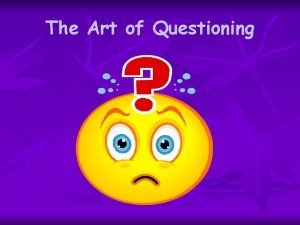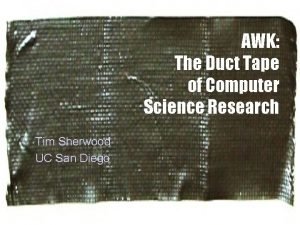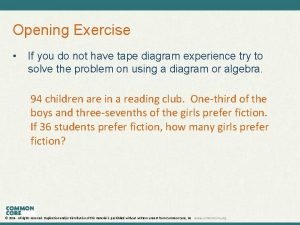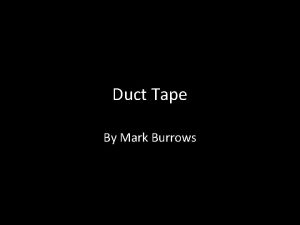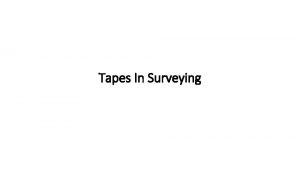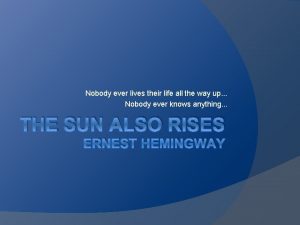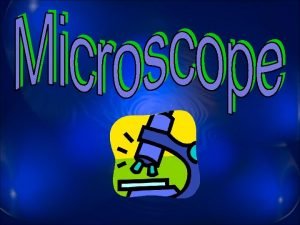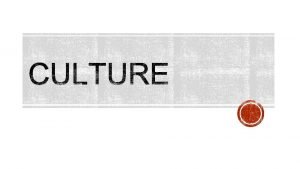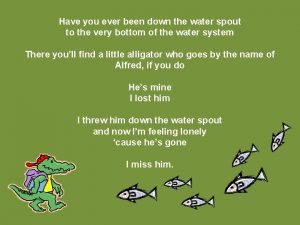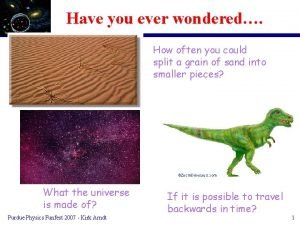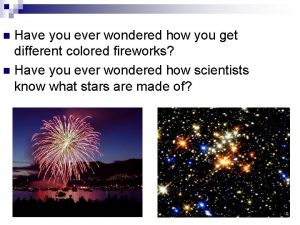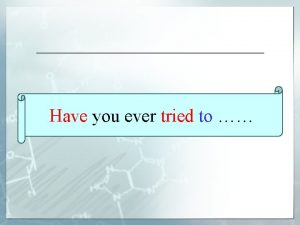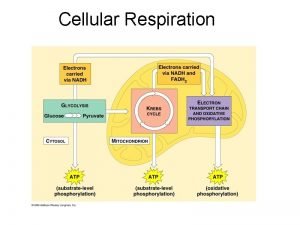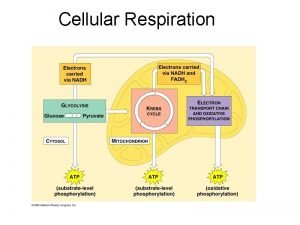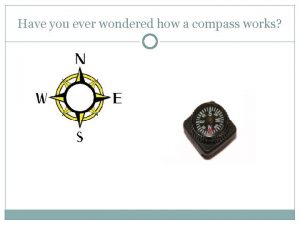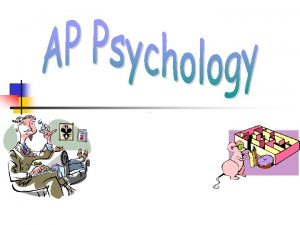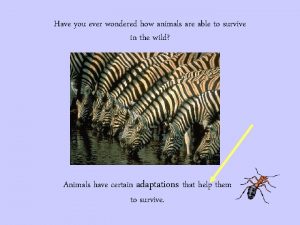Whoops Have you ever wondered where duct tape


















- Slides: 18

Whoops! Have you ever wondered where duct tape came from? How do you think it was invented? Do you think the purpose was to make tape? Who do you think thought of the idea? Today’s Topic: Discuss accidents that led to the development of familiar products

Tea According to legend, Chinese Emperor Shen Nung required that drinking water be boiled. While journeying in his realm, servants boiled water for him to drink. During the process, dried leaves from a nearby bush fell into the water and created a brown brew. The interested emperor tasted it and enjoyed it very much. Today, tea is one of the most popular drinks in the world.

Cheese Also by legend, over 5000 years ago, an Arab nomad brought milk stored in a pouch made of a goat or sheep’s stomach on a trek across the desert. Heat from the sun along with rennet (part of digestive juices) from the stomach pouch caused the milk to separate into curds (milk solids) and whey (watery fluid), the first cheese.

Vulcanized Rubber (1839) During the early 1830’s, a “rubber fever” swept across America. However, rubber products became brittle in winter and melted in summer. People quickly lost interest, with the exception of Charles Goodyear. Fascinated by the gummy elastic, Goodyear experimented for years as a poor man unable to feed his children.

Vulcanized Rubber (1839) Although the details are unclear, in 1839 while experimenting with sulfur, some of Goodyear’s rubber gum was flung on a hot stove. It didn’t melt; it charred. The new substance was dry, springy and weatherproof. Goodyear insisted that, like Newton’s apple, his discovery wasn’t by accident but only meaningful for the man “prepared to draw an inference. ”

Chewing Gum (1869) American inventor Thomas Adams was using chicle to try to find a new base for rubber to make tires. He met General Antonio Lopez de Santa Anna, whom he remembered chewing the substance he tried to make rubber with. Much better than the spruce or paraffin gums popular at the time, Adams produced a chicle-based gum. After experimenting with flavors, he created Adams’ Black Jack, which is the oldest flavored chewing gum still on the market.

Floating Ivory Soap (1879) A worker at Procter & Gamble went on lunch break, but forgot to turn off the soapmixing machine. When he returned, the mixture had gotten a lot of air mixed into it. He made soap with it anyway. Soon after, Procter & Gamble began to receive requests for more of the floating soap. This story has been told for more than 75 years, but recent research suggests that floating soap may have been part of James Gamble’s plan all along.

Corn Flakes (1894) Dr. John Kellogg, chief physician at Battle Creek Sanatorium, and his brother W. K. Kellogg thought the bread on the menu was too tasteless, although nutritious. Searching for an alternative, they began putting wheat through rollers. They left some wheat out for a day by accident. Even though it was no longer fresh, they ran it through the machinery. Instead of the usual large sheet, the rollers produced many flakes that were light and crisp when baked. It was so popular with the patients that some would even request it after leaving Battle Creek.

Safety Glass (1903) After knocking a glass flask to the ground, French scientist Edouard Benedictus was astonished to find the shattered glassware still maintained its shape. An assistant did not bother to clean the clear plastic solution from the flask because it appeared clean already. The thin layer of dried plastic that coated the inside of the flask held the broken pieces together. Now safety glass is standard equipment as windshields and as doors in many public buildings.

Popsicle (1905) Frank Epperson, age 11, mixed soda water powder and water with a stirring stick. After leaving his mixture on the porch overnight when it was very cold outside, Frank returned to find a stick of frozen soda water which he originally called an “Epsicle. ” Many years later he made a company around his accidental invention.

Wheaties (1921) In Minneapolis, a health clinician accidentally spilled some bran gruel mix on a hot stove. It formed a crisp flake. He took the idea back to the Washburn Cosby Company where George Cormack perfected the flake, so it would not turn to dust in a cereal box. The name “Wheaties” was chosen by a companywide contest to name the cereal.

Saran Wrap (1923) Polyvinylidene chloride, aka Saran. TM, was first used in military equipment protection. However, when people realized that Saran. TM would cling to almost anything including itself, it began being used to package food to maintain freshness.

Penicillin (1928) Sir Alexander Fleming researched influenza. Some mold contaminated one of his culture plates. He observed that the mold killed bacteria. One of the medical world’s most important discoveries, Fleming’s mold eventually led to the development of penicillin.

Teflon (1938) Roy Plunkett, an employee of Du. Pont, experimented with Freon refrigerants as gases. One night, a sample turned into a white, waxy solid. By testing the new polymer, Plunkett found that it was slippery and highly resistant to corrosive acids. Teflon has been used in several different arenas including artillery shell fuses in World War II, stain repellant in fabrics, and non-stick cookware coating.

Microwave Oven (1945) British scientists developed a microwave radar to detect enemy aircraft. This secret weapon was essential to Britain’s success in the war, but the magnetron tube they had come up with could not be easily mass produced. Raytheon, a small American company, eventually became the major magnetron supplier during the war because of Percy Spencer.

Microwave Oven (1945) Spencer made improvements to the British design that simplified production and improved the radar function, but that is not all Spencer found. A candy bar melted in his pocket while he was close to a running magnetron tube. He tested other items like popcorn and an egg, and he discovered that microwave energy could be used to cook food.

Post-it Notes (1980) In 1968, Dr. Spencer Silver made a weak adhesive while trying to make a strong one. For nearly a decade, nothing happened with Silver’s recipe. His colleague Art Fry became frustrated by losing his place in his hymnal while singing in a church choir because his bookmark kept falling out. Thanks to 3 M’s “bootlegging” policy, Fry was allowed to spend up to 15% of his time at work on any project of his choosing. During that 15%, Post-it notes were born.

WHOOPS! • So, many common items we eat, drink or use everyday were actually invented or discovered by accident! • Thought question: Can you think of any other things that were “accidentally” invented or discovered? – Write down at least three ideas
 Have you ever wondered
Have you ever wondered Do you ever wonder why questions
Do you ever wonder why questions Have you ever wondered why some people
Have you ever wondered why some people For many years people have wondered
For many years people have wondered Duct tape computer
Duct tape computer Duct tape diagram
Duct tape diagram Fash
Fash What is tape in surveying
What is tape in surveying Ever ancient ever new
Ever ancient ever new Ever ancient ever new
Ever ancient ever new Have you ever looked
Have you ever looked Ever tried ever failed no matter
Ever tried ever failed no matter Pismeni zadatak
Pismeni zadatak Warehouse inventory shrinkage statistics
Warehouse inventory shrinkage statistics Handcuffs
Handcuffs Ya aburnee arabic
Ya aburnee arabic Have you ever climbed a mountain
Have you ever climbed a mountain Have you ever been down the water spout
Have you ever been down the water spout Have you ever ridden a camel
Have you ever ridden a camel

